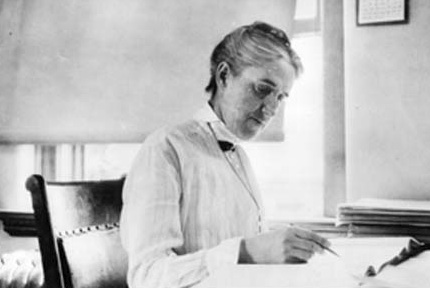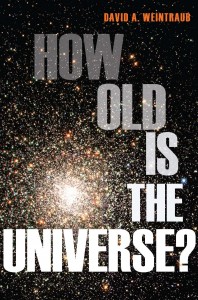By David A. Weintraub
 A century ago, Henrietta Leavitt made one of the most important astronomical discoveries ever. She had earned a bachelor’s degree from Radcliffe College in 1892, then worked for a decade as a volunteer at the Harvard College Observatory before being hired in 1902 to identify variable stars on photographs in the growing Harvard photographic plate collection. Even though she had managed to publish a paper under her own name in 1908, her data reporting what astronomers now call the period-luminosity (P-L) relationship for Cepheid variable stars were published in 1912 under the name of the director of the Harvard College Observatory, Edward Pickering. He was kind enough to acknowledge her contributions in the first sentence of the paper, writing “the following paper has been prepared by Miss Leavitt.” Notably, he did not write “all of the work presented herein is solely to the credit of Miss Leavitt.” History, however, bears witness to Leavitt as the scientist behind this work.
A century ago, Henrietta Leavitt made one of the most important astronomical discoveries ever. She had earned a bachelor’s degree from Radcliffe College in 1892, then worked for a decade as a volunteer at the Harvard College Observatory before being hired in 1902 to identify variable stars on photographs in the growing Harvard photographic plate collection. Even though she had managed to publish a paper under her own name in 1908, her data reporting what astronomers now call the period-luminosity (P-L) relationship for Cepheid variable stars were published in 1912 under the name of the director of the Harvard College Observatory, Edward Pickering. He was kind enough to acknowledge her contributions in the first sentence of the paper, writing “the following paper has been prepared by Miss Leavitt.” Notably, he did not write “all of the work presented herein is solely to the credit of Miss Leavitt.” History, however, bears witness to Leavitt as the scientist behind this work.
The P-L relationship tells us that the time required for a Cepheid to change from maximum to minimum brightness and back again (the period) is related to its true brightness. So what, you say. Here’s what: measure the period (which is easy to do) for a Cepheid. The P-L relationship gives us the intrinsic brightness of the star. From the intrinsic and the apparent brightness of the star, and the inverse square law of light, we obtain the distance to the star. The distances to astronomical objects are incredibly hard to measure. Without the P-L relationship, astronomers in 1912 could measure distances only to stars within about a few dozen light years of the Sun. With the P-L relationship, we can measure the distance to any Cepheid we can discover, and since Cepheids are intrinsically among the brightest known stars in the universe we can identify them out to distances of tens of millions of light years.
In 1925, Edwin Hubble identified Cepheids in spiral nebulae; thus, by using the P-L relationship to obtain distances to these spirals, he proved that the Milky Way is not the entire universe but is merely one of many galaxies. That’s a rather profound change in understanding our relationship to the universe. Four years later, Hubble would use the P-L relationship as the first step for determining distances to dozens of galaxies. With those distances, which he then correlated with the velocities of the galaxies, he discovered that the universe is expanding. That’s another rather astounding discovery, with quite profound astrophysical as well as cultural and theological implications. The Hubble Space Telescope was launched in 1989 with one ‘key project’ in mind: discovering Cepheids at distances of tens of millions of light years in order to calibrate the rate at which the universe is expanding. That rate, in turn, gives us the age of the universe: 13.7 billion years. That’s a lot of mileage for one discovery. Thank you, Miss Leavitt.
About the author: David A. Weintraub is the author of How Old is the Universe? (Princeton University Press, 2011) and Is Pluto a Planet? (Princeton University Press, 2008). He is a Professor of Astronomy and director of the Communication of Science and Technology program at Vanderbilt University.

